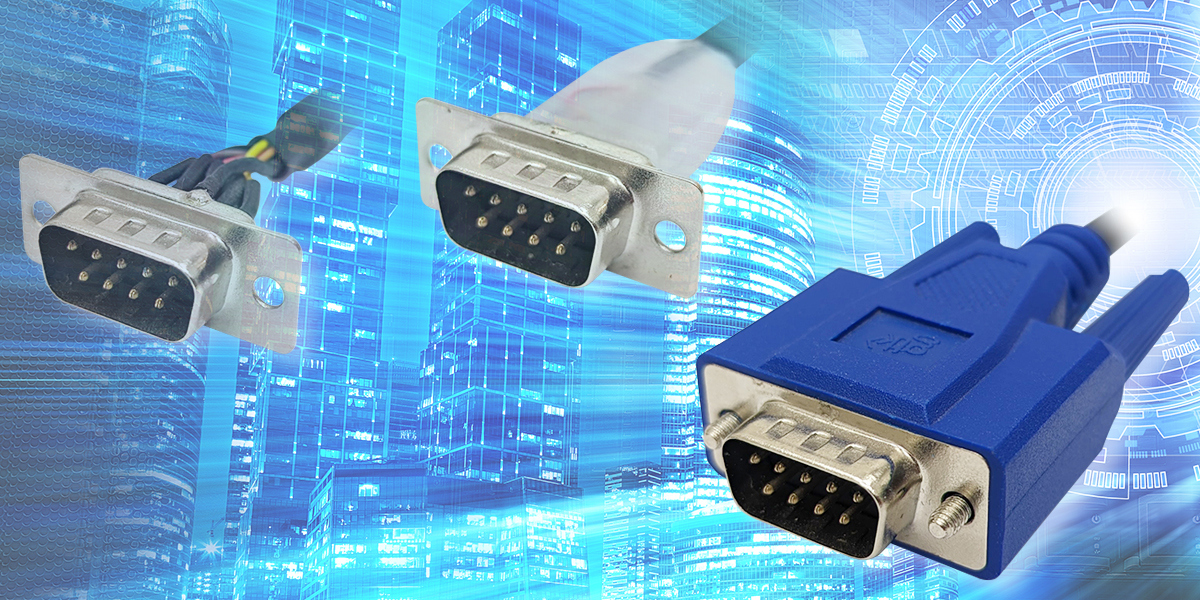To overmould or not to overmould, that is the question
May 25, 2023 / Press Release , Cable Assemblies
Tom Hennessey, Technical Sales Manager at GTK UK, supplies insight into the cost-effectiveness and shielding performance characteristics of overmoulded cable assemblies.
Almost everyone has used an overmoulded cable assembly, whether it’s for their PC or a home electronic product, and consumers don’t really give them a second thought. These assemblies come packed in the box as part of the product they have bought and may seem like an afterthought. However, a lot of consideration has often been given to these assemblies.
OEMs primarily choose overmoulded cable assemblies for their new product designs because of their physical performance characteristics. They are extremely durable, withstanding a considerable amount of maltreatment, and their integral strain reliefs help to keep the cables and contacts intact, despite pulling and twisting. They also provide protection in harsher, more industrial environments, preventing dust and water ingress, and can also run consistently and reliably in environments where shock and vibration are factors that need to be taken into account.

From a commercial perspective, there is also the added option to use overmoulded cable assemblies as part of the overall product “brand experience” by choosing colours synonymous with the company brand or incorporating a logo. This usually just involves a single NRE cost; however, in the highly competitive consumer electronics market, it is often considered essential.
There is still a general perception that overmoulded assemblies are going to be more costly to produce, but this isn’t necessarily the case. OEMs also query the shielding effectiveness of overmoulded cable assemblies when compared with the more conventional (and some would say more “belt and braces”) die cast shells used for traditional cable assemblies.
Over 98% of the cable assemblies we supply are custom in some way, so we are familiar with the fact that no two cable assemblies are the same.
Looking at a real customer application, we can review this all in more detail. One of our existing customers that operates in the medical sector had been procuring shielded cable assemblies from GTK for some time; they now wanted to explore cost-down opportunities for their product and asked us to review the options for them. Their original assemblies used die cast shells and ground wires to provide the shielding needed, so we decided to look at overmoulding as an alternative production method.
The overmoulding process for these specific assemblies involves several stages:
Stage 1: The wires are terminated to the connector contacts and covered with heat shrink. The product is tested for continuity and short circuits.
Stage 2: An inner mould is produced, which holds the wires in place, and protects them from the higher temperature, higher pressure outer mould. Continuity and short tests are repeated.
Stage 3: In this example where shielding was required, copper tape is wrapped around the inner mould and soldered all the way around the connector shell. The cable braid/drain wire is soldered to the copper tape.
Stage 4: The outer moulding is applied. This is typically PVC material and can be finished in a variety of colours if required. Logos can be added to the overmould if required.
By overmoulding key sections of their large, multi-branching cable looms, we were able to provide a 47% cost saving and the customer was delighted. Added to this, the shielding effectiveness of the assemblies was parallel to the original design.
In terms of production volumes, you don’t need to purchase thousands of cables to achieve this kind of saving; a production quantity of around 500 assemblies is the sweet spot where economies start to kick in.
Over 98% of the cable assemblies we supply are custom in some way, so we are familiar with the fact that no two cable assemblies are the same. However, we can provide some general tips as to how to keep the cost of overmoulded cable assemblies down:
- Start with a production volume of 500 or more (which isn’t prohibitive)
- Where possible, use standard overmoulds to avoid additional tooling costs (a special shaped overmoulding incurs a premium starting at around £1,000)
- Decide on logo or no logo – adding one requires an insert, which typically costs around £100
In summary, don’t rule out overmoulded cable assemblies for use with your products. They can enhance your designs with extra protection and branding opportunities, and you might be surprised at the finished product cost in comparison with conventional cable assemblies. At GTK our technical experts can review your designs and talk through the different options available to you.